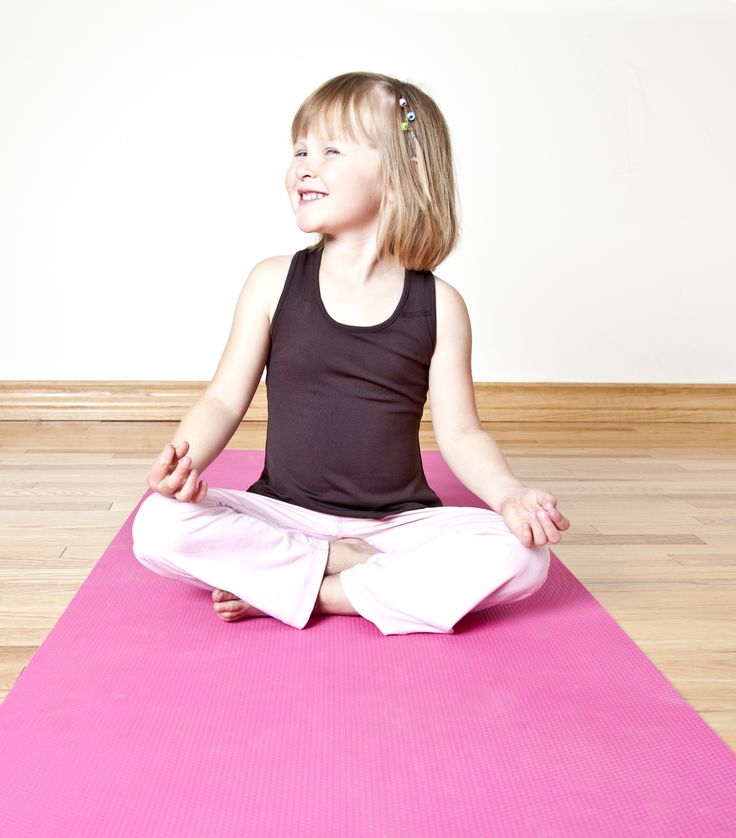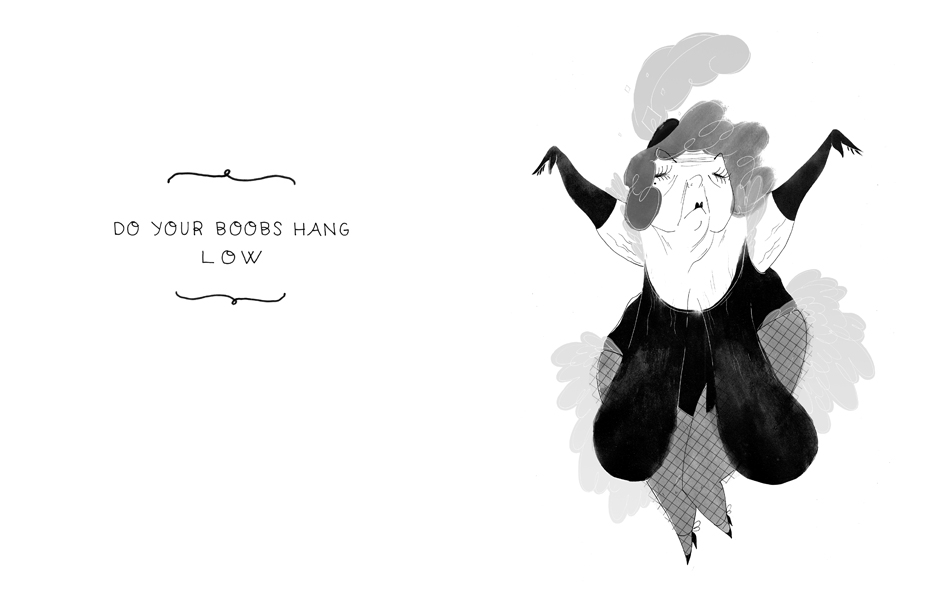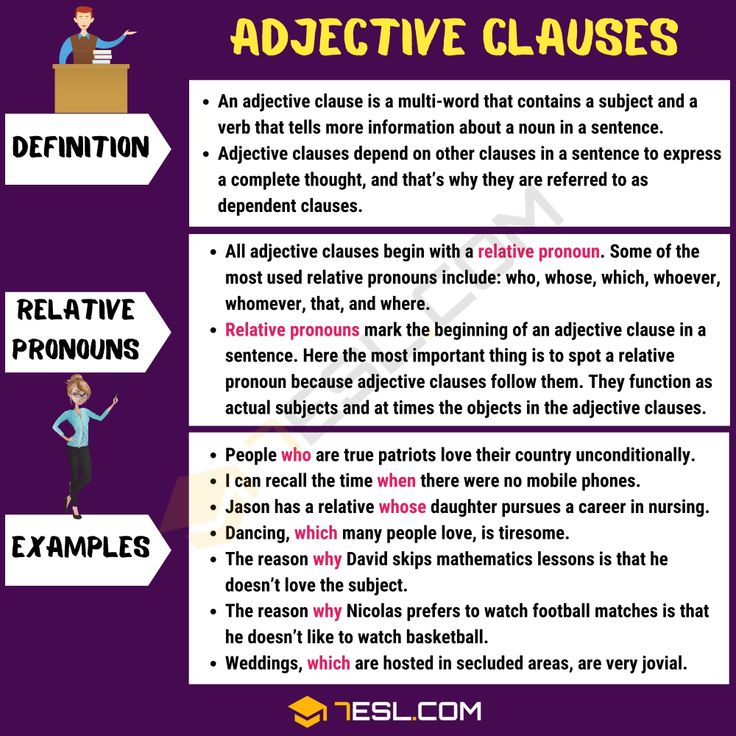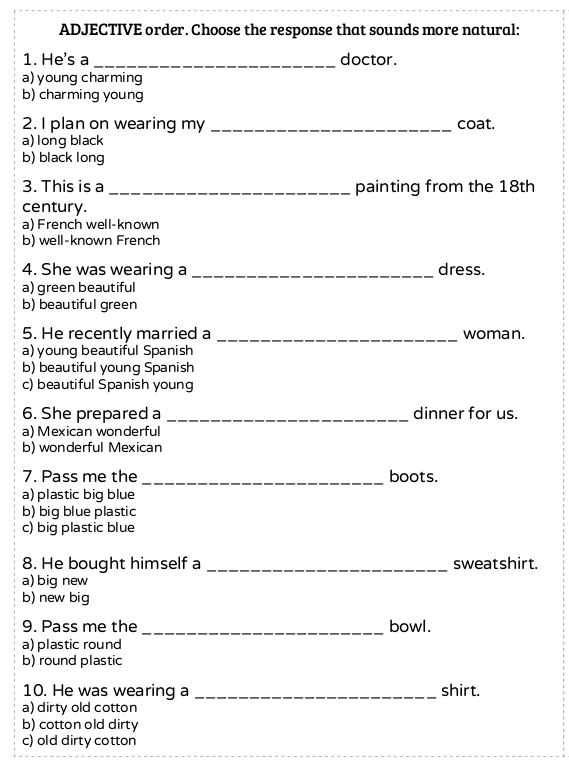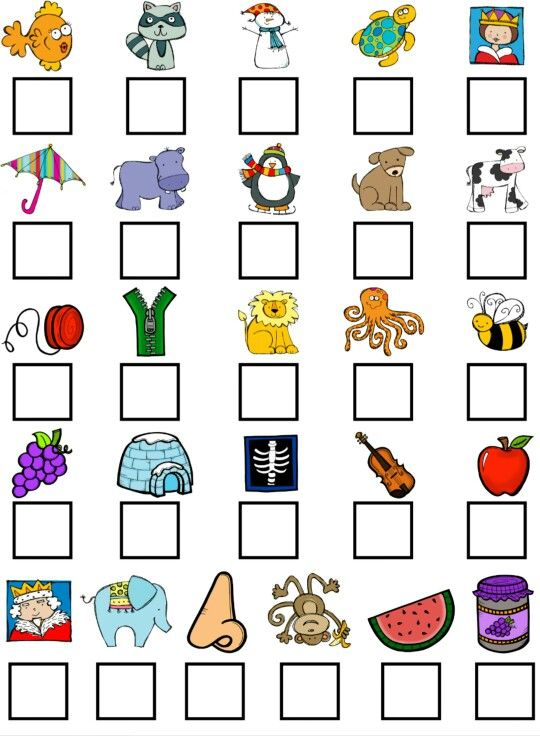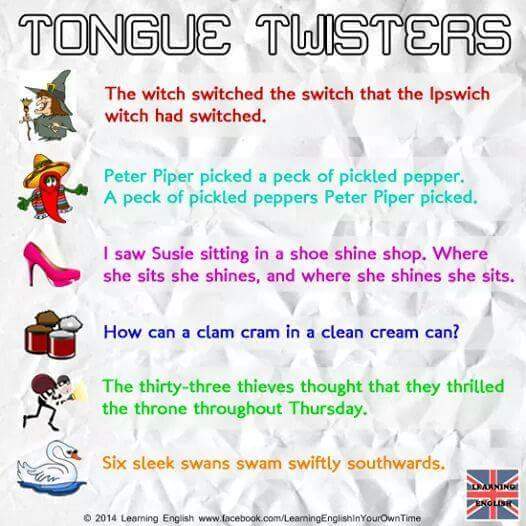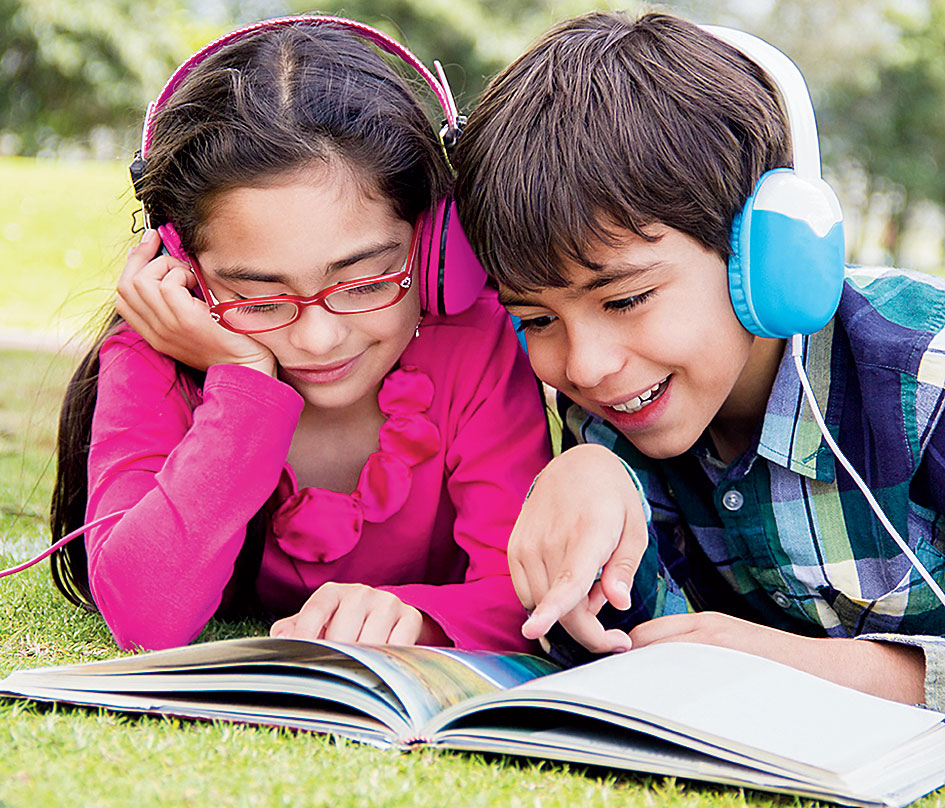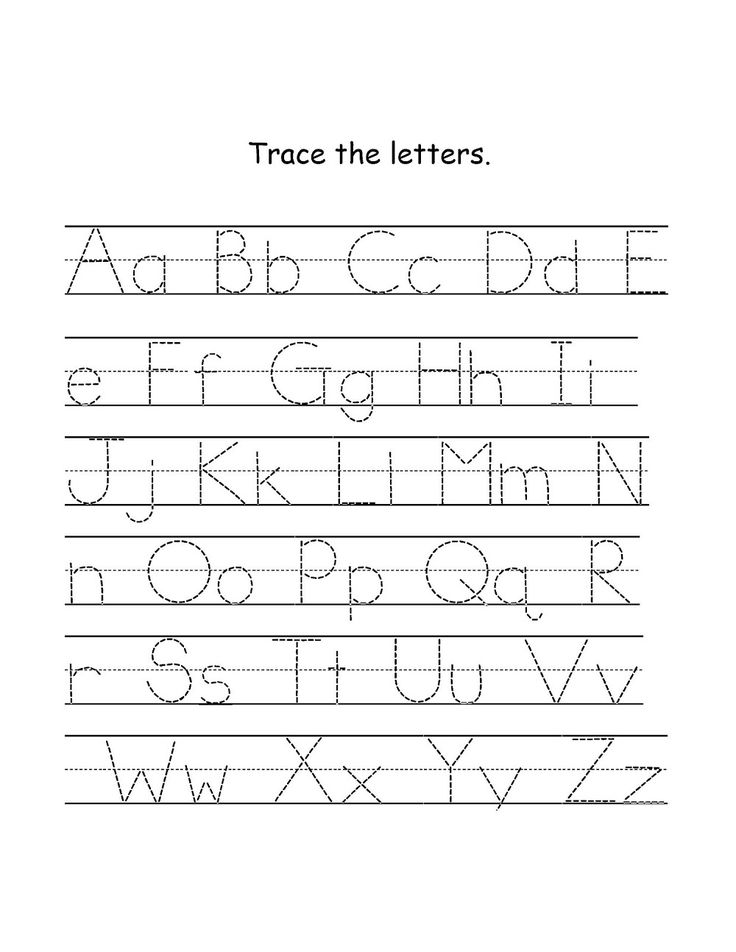Meditation benefits children
Just Breathe: The Importance of Meditation Breaks for Kids
Our kids' brains are tired, and children of all ages really need opportunities where they can take time out each day "unplugged" to relax and focus. Meditation offers this break and helps kids function more effectively and clearly.
Children today also have reportedly high stress levels. To help them take a break, the American Academy of Pediatrics (AAP) encourages parents to share meditation with their children—and teachers to incorporate mindfulness training into their lesson plans.
The simple act of teaching children how to stop, focus, and just breathe could be one of the greatest gifts you give them.
Meditation Options for Children
Meditative practices have been used since ancient times to improve health and well-being. But, just as an athlete may do different exercises, people who practice meditation often use different types.
The most common types of meditation practice are concentration, mindfulness, movement based, cultivating positive emotions, and emptying. There are specific examples and ways to practice each type.
See table.
Many meditation practices use breathing techniques to promote a state of calm. Mindfulness meditation on breath, perhaps the most well-known type, involves sitting quietly, resting or closing your eyes and bringing your attention to your breath. When your attention drifts away, which it is likely to do, simply usher your attention back to your breath without judgment. You don't need years of meditative practice to benefit from this technique, nor do your children.
There's no doubt, however, that sitting still for any length of time can be difficult for some kids. For this reason, a movement-based meditation, such as yoga, may serve as a good introduction.
Research on the Benefits of Meditation in Children
Meditation is used to rest the mind, body and spirit. This, in turn, has many mental, physical, and spiritual benefits. Mindfulness meditation, specifically, is gaining a foothold in disease prevention and treatment.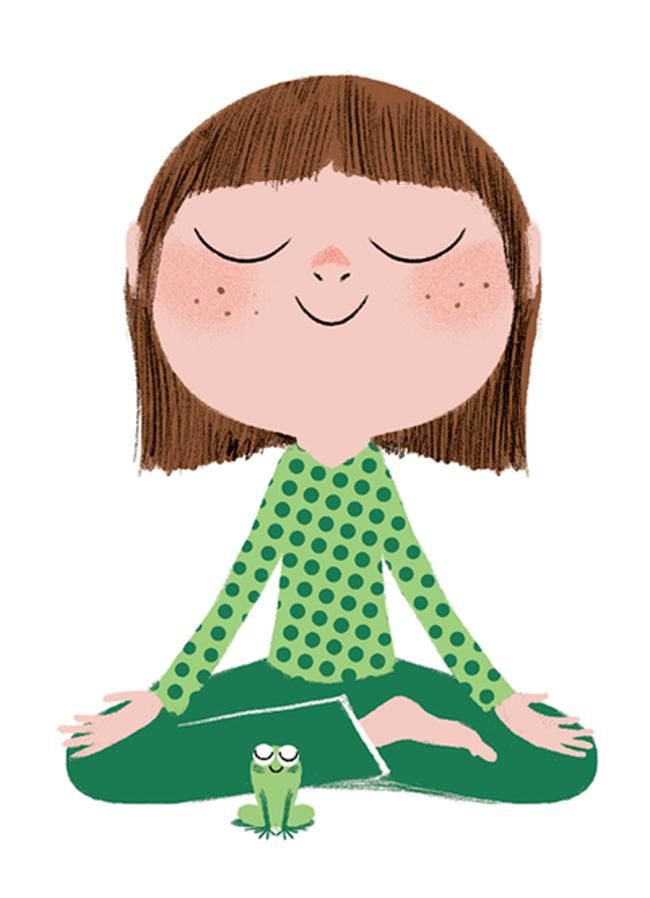
A number of studies in school settings also show improved attention and behavior. Some research has shown benefits for attention deficit hyperactivity disorder (ADHD), anxiety, depression, school performance, sleep, behavior problems, and eating disorders. For example, a trial of 300 low-income, minority urban middle-schoolers using school-based mindfulness instruction led to improved psychological functioning and lower levels of posttraumatic stress disorder (PTSD) symptoms.
There are also physical benefits as it calms the nervous system and decreases stress hormones. Studies have shown benefits for gastrointestinal symptoms, obesity, headaches, high blood pressure, pain sensitivity, and immune function. For example, a trial looking at the effect of mindful breathing meditation at a summer camp of 166 teens at risk for cardiovascular disease found that breathing awareness produced a reduction in blood pressure and heart rate.
Meditation Tips
Meditation does not have a set of rules, but there are some tips that can help.

The length of time and frequency of meditating can vary for different people and different practices. But, pediatricians typically recommend the following time frames:
Preschool children: A few minutes per day.
Gradeschool children: 3-10 minutes twice a day.
Teens and adults: 5-45 minutes per day or more based on preference.
Try incorporating deep breathing into your children's daily bedtime routine—it can help them wind down for the night and make meditation easier to do when other situations arise.
Remind gradeschoolers and teens to take a few deep breaths before answering a difficult question at school, taking a test, or before an athletic performance.
As young children learn to manage strong emotions, deep breathing can be part of the process—especially before and after time outs.
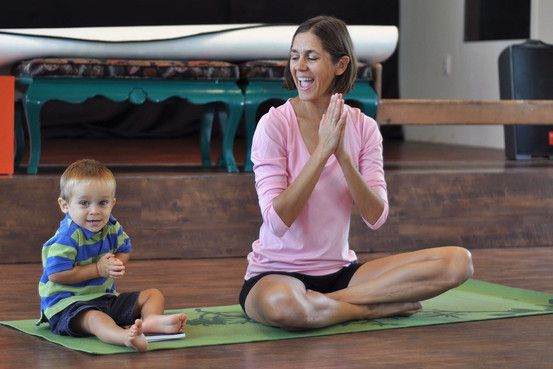
While meditation can be done on your own, it can also be done with the help of a trained professional. Some counselors and individuals with training in meditation can help others learn and practice meditation.
Meditation is not currently covered by most insurance plans unless given by a licensed counselor. It is always best to check with your individual plan. Flexible medical spending programs may count meditation training as a medical expense.
There are multiple ways to learn different practices of meditation. There are books, audio recordings, videos, online training, websites, and even smartphone apps to help children meditate. Choose and practice the one that works the best for you and your child, and enjoy a calmer body, mind and spirit.
Talk to Your Pediatrician
Since meditation practices are generally safe and have many possible benefits, they can be used without much risk. As with any lifestyle change, however, it is best to discuss it with your child's pediatrician before adding meditative practices to your child's wellness routine.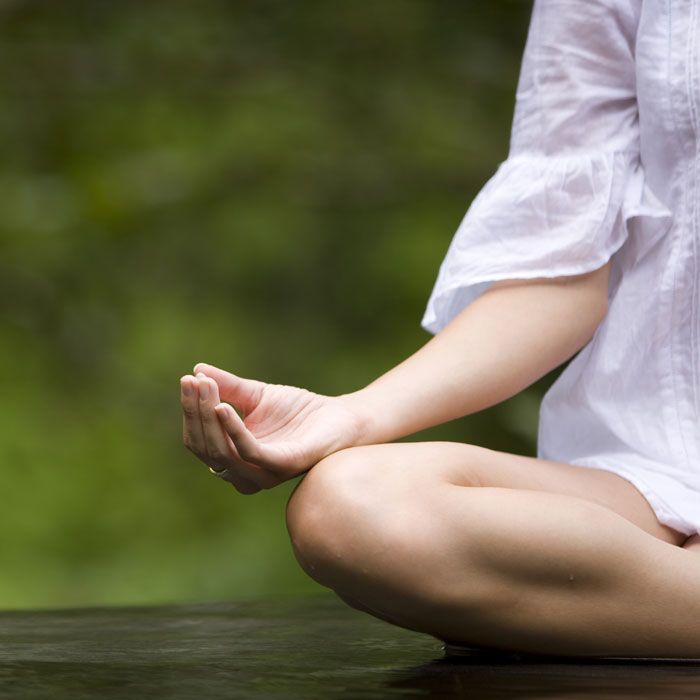
Additional Information & Resources:
Helping Children Handle Stress
For Teens: A Personal Guide for Managing Stress
For Teens: Creating Your Personal Stress-Management Plan
Childhood Depression: What Parents Can Do to Help
Recognizing & Managing Stress in Children (Video)
Mind-Body Therapies in Children and Youth (AAP Clinical Report)
The information contained on this Web site should not be used as a substitute for the medical care and advice of your pediatrician.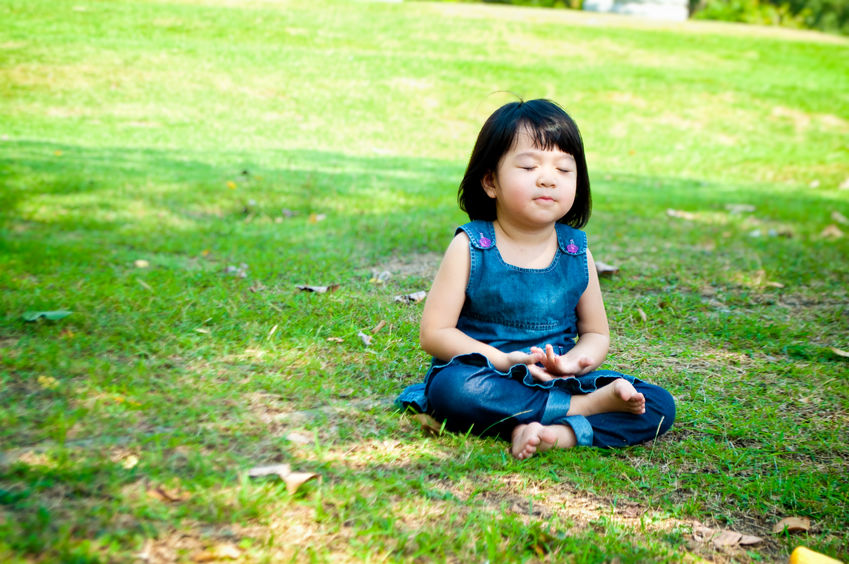 There may be variations in treatment that your pediatrician may recommend based on individual facts and circumstances.
There may be variations in treatment that your pediatrician may recommend based on individual facts and circumstances.
Benefits, Basics, And Expert Tips
You’ve likely heard of meditation for adults, and maybe you’ve even learned about the many benefits it offers, but have you ever considered meditation for kids?
While the thought of getting your child to sit calmly for long enough to reap the rewards of meditation might feel overwhelming, it doesn’t have to be.
We at HOMER have compiled our favorite tips and tricks to start building a simple meditation routine with your child. Take a look below to get started today!
What Is Meditation?
At its core, meditation is a practice of mindfulness and self-awareness, and meditation for kids is no different. By practicing meditation regularly, we can teach our minds to observe stressful thoughts without judgment and learn to relax when we need to most.
Particularly in today’s society with the constant barrage of information and technology coming at us all day long, we allow ourselves very little downtime to breathe, relax, and simply be with our thoughts.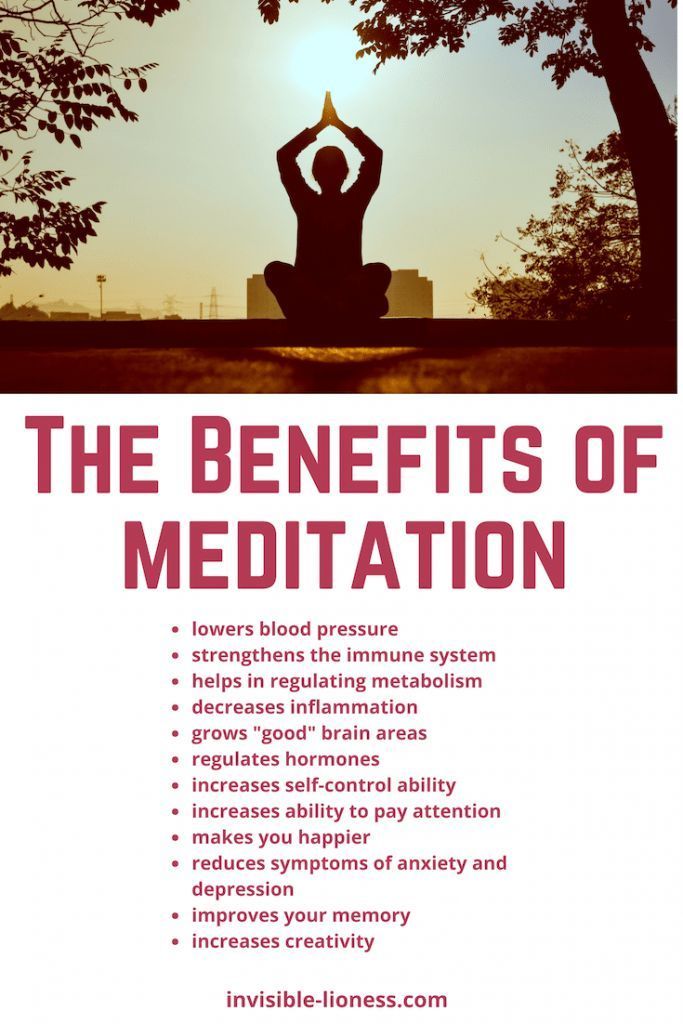
How exhausting!
Meditation helps us switch off distractions — whether that’s something stressful externally, like a thunderstorm, or busy thoughts racing through our minds — and stay focused on the present moment.
Who Can Benefit From Meditation?
Anyone can learn to meditate, even kids! Children as young as two years old can benefit from meditation and the peace of mind it brings.
By incorporating meditation for kids into their daily routine, your child will have the opportunity to tap into this valuable skill at a moment’s notice to help them find peace and quiet whenever they need it.
The Benefits Of Meditation For Kids
For many of us, meditation is something we started as adults after hearing about or reading up on its benefits. But imagine if we had been introduced to it when we were much younger.
Could we have navigated those emotionally challenging teenage years better? Would we have managed to deal with exam stress more effectively? How about speaking to our parents, siblings, and friends with more kindness?
The answer is a big YES to all of these questions.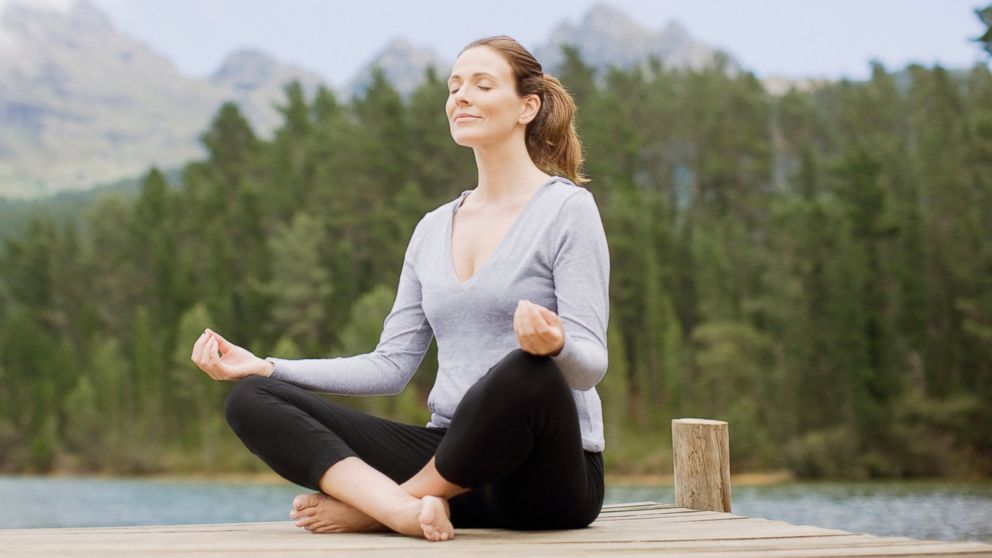 Multiple studies have shown the great benefits of meditation in kids’ lives.
Multiple studies have shown the great benefits of meditation in kids’ lives.
One study showed the effectiveness of mindfulness meditation in adolescence; another one revealed how meditation helped students perform better academically; and this study focused on the link between emotional intelligence and meditation in teens.
This is just some of the resounding evidence that speaks to one fact: Meditation can be incredibly beneficial in many aspects of children’s lives.
Here are other notable ways meditation can help your child:
- Improved sleep
- Increased focus and prolonged attention span
- Reduced stress and anxiety
- Stronger mental resilience
- Improved emotional regulation
- Increased self-awareness and empathy
In addition to the above benefits, studies have shown that meditation can help children by improving their working memory capacity.
In a nutshell, this is the cognitive ability to selectively maintain and manipulate said information without getting easily distracted over short periods of time.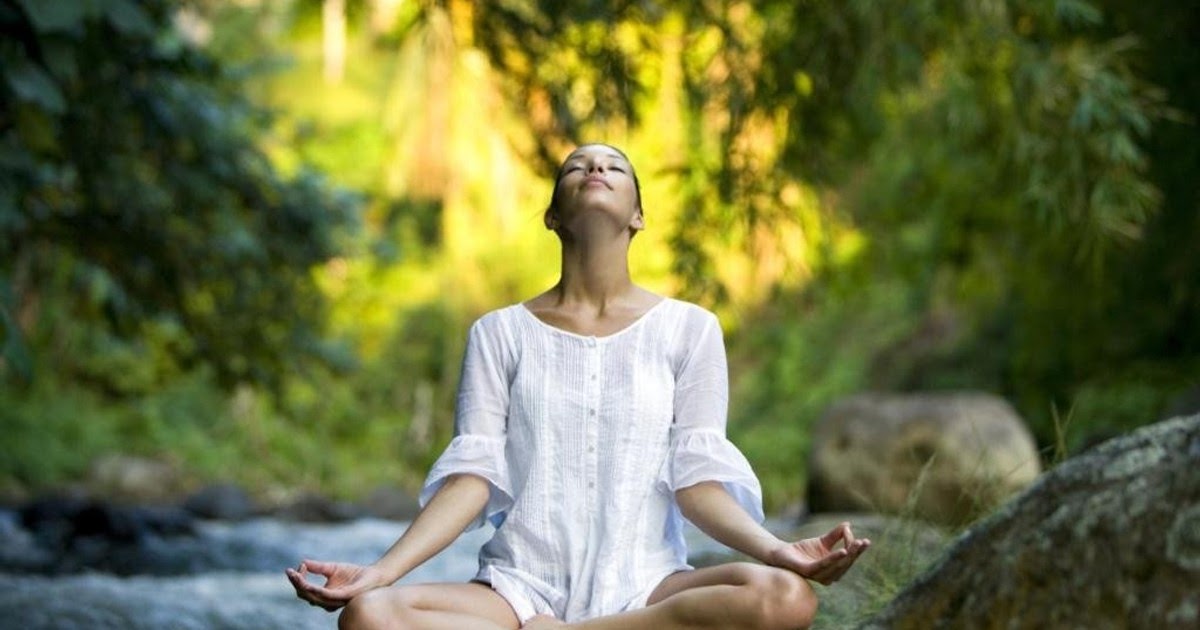 This can result in improved academic performance, including mathematical and literacy skills.
This can result in improved academic performance, including mathematical and literacy skills.
Now, you may be sold on all of these incredible advantages, but you just have one question: Can every child meditate?
As a parent, it can be challenging to imagine your child sitting still and focusing on a guided meditation. You’ve witnessed their limited attention span and know how easily they get frustrated. Surely this is for some supernatural kids and not yours.
You’ll be pleased to know that children can actually be great at meditation! We sometimes forget how willing and receptive kids are to new experiences. Their curious minds tend to embrace new things.
So, while it’s normal to be a little anxious about introducing meditation to your child, the incredible benefits are worth it.
The Basics Of Meditation For Kids
Now that we’ve covered the benefits of meditation for kids, let’s dive into exactly how to get started!
Comfort
You may want to start your meditation session by doing a 30-second dance party, stretching, or jogging on the spot — anything to get those wiggles out and help your child get ready to sit quietly and have some focus time.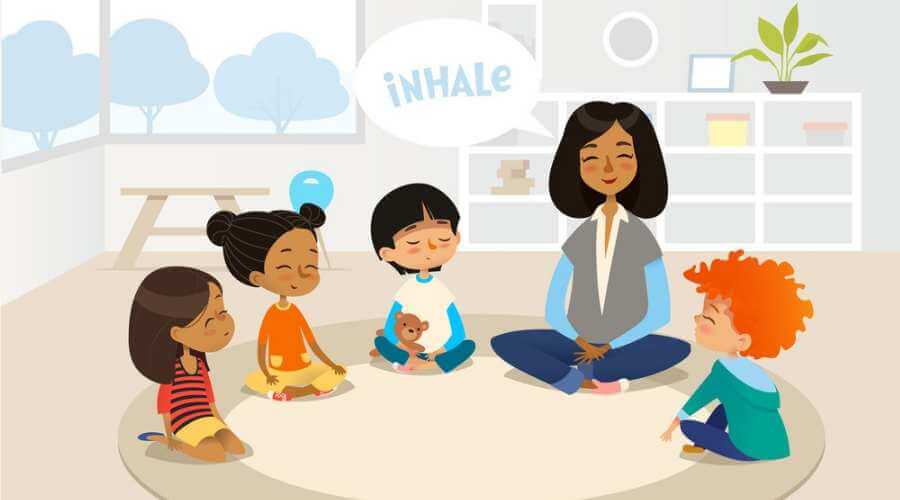
Once you’re both ready, it’s time to get comfortable and begin preparing to meditate. Despite what comes to mind when you picture meditation, you don’t always have to sit cross-legged with your hands on your knees!
Meditation practice should begin with your child sitting or lying in a comfortable position — whatever feels best.
If sitting with your legs crossed is most comfortable, start with that position. If your child feels most comfortable lying flat on their back, that’s fine, too!
Focus With Breathing
Focusing on the sensations we feel in our bodies is a great way to begin practicing mindfulness and meditation, particularly for younger children who may have difficulty concentrating for long periods.
Start by focusing on simply breathing in and out. Have your child place one hand on their belly and the other hand on their chest. Have them notice how their chest and belly rise when they inhale and fall during exhale.
You can count out loud while doing this breathing exercise.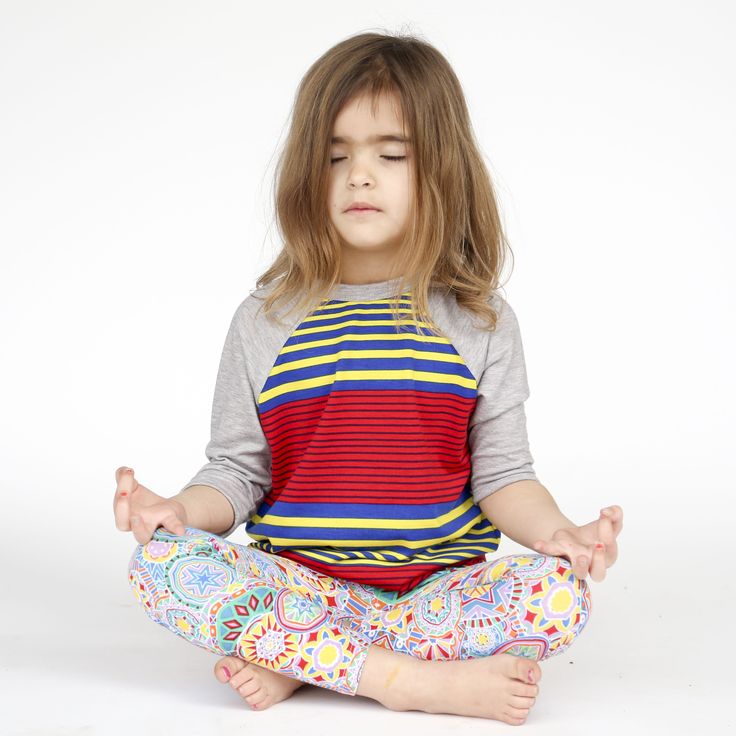 Try breathing in for the count of four, holding for two counts, and breathing out for the count of six.
Try breathing in for the count of four, holding for two counts, and breathing out for the count of six.
Your child may find it relaxing to close their eyes during this exercise, or they may prefer to have their eyes open.
After five total counts of breathing, ask your child how they’re feeling. They might feel happy, calm, relaxed, or they may even feel restless or grumpy.
Identifying these emotions along with their bodily sensations is the first step of mindfulness — all emotions are OK! If your child becomes overwhelmed or too restless to continue, tell them you’ll try again tomorrow.
It’s important to let your child take the lead when you’re starting out with meditation for kids. Pushing them too hard too quickly may make them want to avoid it altogether.
Story
Once you feel that your child has grasped the basics of slow, mindful breathing, you can begin to incorporate storytelling into your meditation practice.
This meditation technique is especially helpful to use as part of your child’s bedtime routine so they can relax before sleep.
After finding a comfortable position, have your child close their eyes and bring all of their attention to their breath. They might even like to have their hand on their belly to feel the rise and fall as they inhale and exhale, just as with our simple breathing exercise.
Begin telling your child a story that will allow them to focus on how their body is feeling, bringing their attention to how comfortable the bed feels on their back or how soft their blanket feels on their skin.
The story can incorporate their favorite toys, people, or places and should be relaxing while allowing them to use their imagination and visualize what you’re describing.
For example, you could say something like, “You’re lying on your bed; what do you feel? Do you feel the smooth sheets? Your soft blanket? Your stuffed elephant is whispering goodnight to you in the sweetest voice. Can you hear her?”
Body Scanning
Body scanning and progressive muscle relaxation are simple techniques that allow you to help your child get in touch with their body.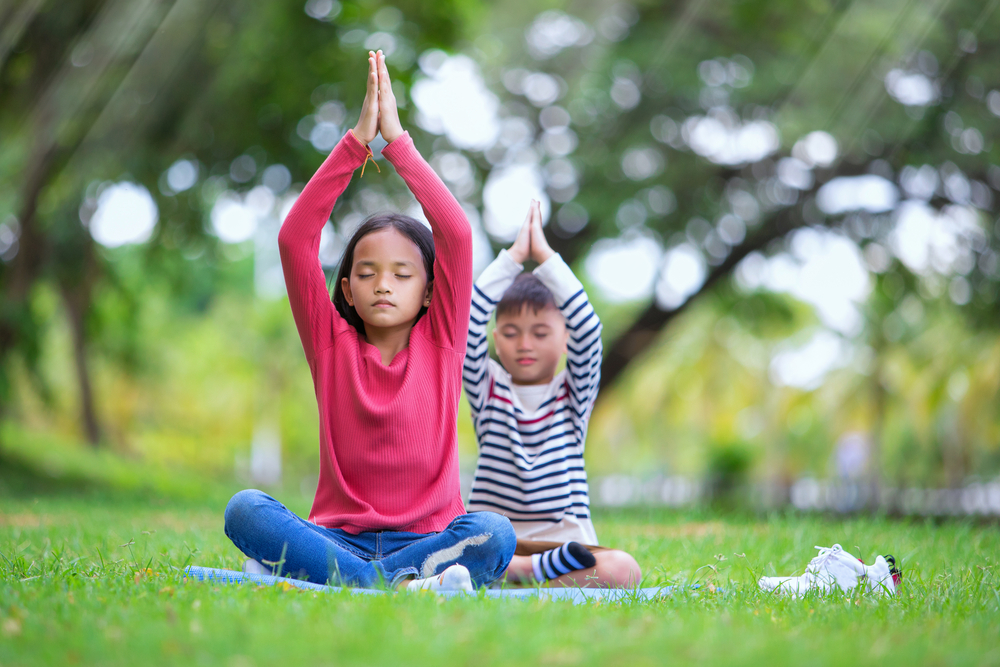
Start by lying down flat on your back with your eyes closed and having your child do the same right next to you.
Beginning with the top of your head, ask your child to notice if they feel any tightness or squeezing feelings in their scalp. Have them picture any tightness melting away like ice cream until their head is completely relaxed.
Move down, muscle by muscle — the nose, the mouth, the neck, the shoulders — until they’ve relaxed all their muscles down to each of their 10 toes one-by-one.
You may even want to ask your child to squeeze each muscle as you progress through their body. This helps them feel the difference between a tight muscle and a calm, relaxed muscle.
Expert Tips For Child Meditation
1) Meet Your Child Wherever They Are
When it comes to meditation for kids, you might be tempted to set goals together and work toward meditating for a particular amount of time. This is great! Just remember not to set those goals too high.
When you’re first starting out with meditation, it’s best to start small and work your way up to longer periods of meditation as your child feels more comfortable with sitting still and focusing.
Try just 30 seconds to start, then increase until you and your child are able to practice meditation together for a full minute.
As you and your child gradually begin to look forward to your meditation practice, you can increase up to 10 minutes for each session.
Meeting your child wherever they are in terms of their ability to focus is key to building a meditation practice that you both enjoy. It will also help them create solid mindfulness habits that they can incorporate into their everyday life.
2) Maintain Consistency
As with anything you want to become great at, consistency is key! Try to keep the time of day (morning or evening), the place (a dedicated chair or rug, for example), and even your child’s clothing (anything comfortable) consistent.
This helps your child to associate the time, place, and outfit with relaxation and helps their brain switch into mindfulness mode.
3) Keep Practicing
If at first you don’t succeed, try, try again! Meditation is called a practice for a reason — it takes a lot of repetition to become masterful.
It can be overwhelming (even for adults!) to take time out of your day or evening and simply be still, so don’t be too hard on yourself or your child if it takes a while to warm up to the art of meditation.
Allow time for yourself and your child to get comfortable sitting with your thoughts, your breathing, and your bodies.
Stick with it long enough to see the benefits meditation offers and you’ll find it easier to complete your sessions.
Meditation Techniques By Age
It’s important to consider your child’s age when starting their meditation journey. For example, it’s more realistic to have a 10-year-old sit quietly for 10 minutes as opposed to a 3-year-old.
Here’s a closer look at how you can introduce meditation and mindfulness to your child in a way that’s most relevant to their age.
For Toddlers (1-3 Years Old)
At this early age, meditation is focused on mindful movement. To get started, speak to your child about things that make them feel happy. This can be butterflies, mommy, daddy, ice cream, a superhero, and everything else in-between.
This can be butterflies, mommy, daddy, ice cream, a superhero, and everything else in-between.
After focusing on the good feelings, it’s time to address the opposite. Ask your child to think of anything that makes them unhappy and where they feel that unhappiness on their bodies.
Then, to help relieve those negative feelings, encourage your child to take slow, deep breaths. This simple method helps train the brain to immediately recognize stress signals and know how to respond so that the body returns to balance.
A child who learns this from an early age may be able to practice self-care even when you’re not around.
For Preschoolers (3-5 Years Old)
For preschoolers, meditation can involve elements of a story. A great starting position is to have them lying down, relaxed.
This is a great age to begin incorporating the story element of meditation that we discussed above. Consider narrating a story to your child that gently encourages them to consider how each of their body parts feels.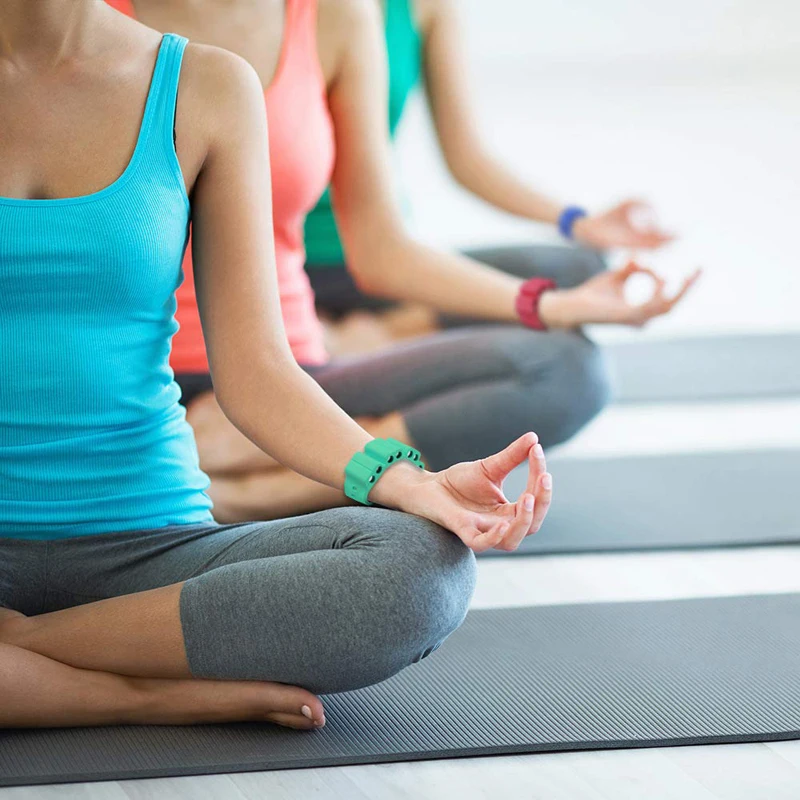
For Kindergarteners And Older (5 Years +)
There are multiple ways to make meditation inviting for school-aged children. Music is one of the most effective methods.
Traditional meditation involves Tibetan singing bowls. These bowls work well because they vibrate at frequencies that help restore parts of the body that are out of balance.
While this may sound great, most of us don’t have Tibetan singing bowls lying around the house. So, another option for incorporating music is to play nature sounds for your child. This can also bring them some calm.
FAQs About Meditation
1) How Often Should My Child Meditate?
The best approach for incorporating meditation into your child’s routine is to commit to the practice frequently. Even if it’s just 30 seconds every day to start with, this half-minute will soon turn to five minutes, 10 minutes, and possibly even more the older they get.
While on this journey, meditating every day may not be easy. Some days your child will be more than willing to participate. Other days, not so much.
Some days your child will be more than willing to participate. Other days, not so much.
The key is to remain patient and consistent as you help guide them. Considering all the benefits mentioned above, it will be worth this time and effort.
2) How Soon Will The Benefits Appear?
If you’re a goal-oriented person, this question may be the most important to you. When exactly will you start seeing the benefits of meditation in your child’s everyday life?
You want to make sure you’re on the right track. We get it. But one of the best things about meditation is that you can’t actually do it wrong.
The most important thing is to start. As soon as you sit down with your child to meditate, you’re already halfway there.
And when you’re looking for the results, it’s probably not going to look like fireworks or flashing lights above your child’s head. Instead, it may be seen in much subtler ways. For example, your child may start sleeping better after struggling for a while.
Instead of focusing on the results, just trust in the process, and the rest will take care of itself.
3) Are There Books That Can Help Me?
Here at HOMER, we love a good book. So, of course, we went searching for some of the best books on kids’ meditation out there.
The books below cover meditation and mindfulness activities and games that you can use at home.
- Meditation for Kids: 40 Activities to Manage Emotions, Ease Anxiety, and Stay Focused (For 4-8-Year-Olds)
- Bedtime Meditations for Kids: Quick, Calming Exercises to Help Kids Get to Sleep (For 4-8-Year-Olds)
- Breathe Like a Bear: 30 Mindful Moments for Kids to Feel Calm and Focused Anytime, Anywhere (For 4-8-Year-Olds)
- Mindful Games For Kids: 50 Fun Activities to Stay Present, Improve Concentration, and Understand Emotions (For 4-8-Year-Olds)
4) Are Some Meditation Styles Better Than Others?
Different types of meditation can be the most beneficial for children. Below are some of the most common.
Below are some of the most common.
Mantra Meditation
As the name suggests, this is where a syllable, word, or phrase is repeated during the meditation session. This mantra can be spoken, whispered, chanted, or repeated in the mind. Om is one of the most common mantras people use.
Using a mantra can help your child focus on the word or phrase alone. It encourages them to avoid any distractions, including memories, sensations, and thoughts.
Mindfulness Meditation
Mindfulness has been increasingly popular over the past few years. And with its popularity, unfortunately, there have been many misconceptions about what it means.
Many people view it as a way to clear their minds and reach a calm or relaxed state. While these can be some of the benefits, that isn’t what mindfulness is.
In a nutshell, mindfulness is about being present. It’s about being aware of your thoughts and feelings, what you’re hearing and seeing, and everything else around you. Our minds can often be distracted by both internal and external stimuli. Mindfulness helps you focus on the present.
Some of the most effective mindfulness meditation techniques for children (and adults) are breathing techniques.
By encouraging your child to focus on their breath, they may observe their thoughts, feelings, and the sensations around them. This allows them to be more in tune with their body and mind.
Guided Meditation
This style of meditation involves listening to a practitioner in person or through an audio recording. It can include music, words, or both.
Guided meditations can have specific focuses. For example, some may focus on improving sleep or calming the mind.
After looking at these different meditation styles, you may wonder which is best for your child. While people may prefer one style over another, the reality is that there is no “best” way to practice meditation. There is also no single technique that works for every child.
The best way to approach meditation for kids is to try out the different styles with your child to see which one is the most effective. Once you’ve found a technique that your child responds well to, work on making it a regular practice.
Enhance Your Meditation Journey With HOMER
By incorporating meditation for kids into your child’s daily routine, you’re helping them learn to use it as a tool to combat stress and refocus whenever they need to!
With consistency and practice, your child will be looking forward to their daily meditation in no time.
Combine your child’s meditation practice with the HOMER Learn and Grow app to watch them build essential skills for school and life! In addition to reading, math, and thinking skills, this app can help facilitate their social and emotional learning, providing opportunities for your child to identify emotions.
Author
Benefits of Meditation for Children | Mothers today
Every time meditation picks up pace in a world that moves faster and faster and stress and anxiety is bread and butter. Its benefits are becoming more and more known, and interest in it is growing. Children can take advantage of meditation. Let's see what they are.
Index
- 1 What is meditation?
- 2 Why teach children to meditate?
- 3 Benefits of meditation for children
- 4 At what age can children meditate?
What is meditation?
Meditation is often confused with contemplation But that's not the point. Meditation is to learn to listen to yourself There is a attention exercise in a world where there are many stimuli that pick it up, but where we miss the signals of our own body. He constantly and completely directs our attention to something specific. Listening to your emotions, feelings, your being can be directed at yourself. Or you can also focus your attention on a specific object such as a fire. It consists of being here and now.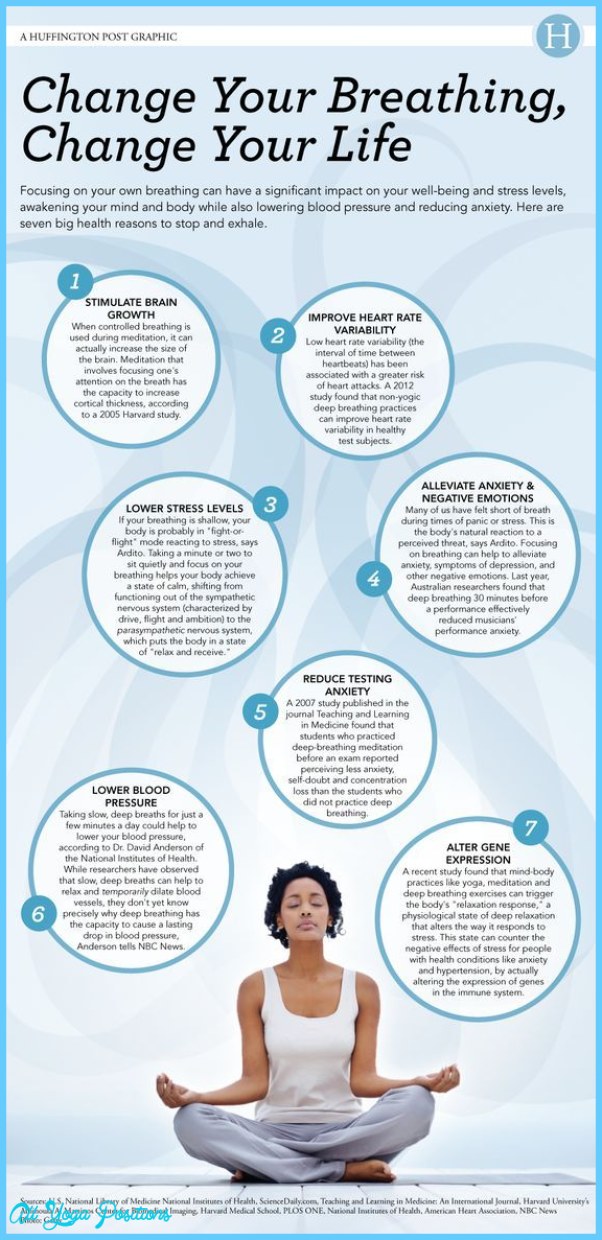
Breathing is very present in meditation. This is usually the focus of attention during meditation. Just focus on what we do naturally and unconsciously.
Although meditation is associated with the Buddhist religion, it can be practiced regardless of your religious beliefs.
Why teach children meditation?
Well, for the same reasons old people should meditate. We live in a world where everything is still there, we want everything quickly and at the moment. In such a world We must learn to stop, observe ourselves, breathe consciously, be aware of ourselves.
If in adults this is beneficial, in children with fully developed brains it is pure gold in what they can achieve.
Benefits of Meditation for Children
Parents and children can enjoy the many physical and mental health benefits of meditation. Below we look at the benefits of meditation for children.
- Helps reduce stress and anxiety children, which helps them calm down.
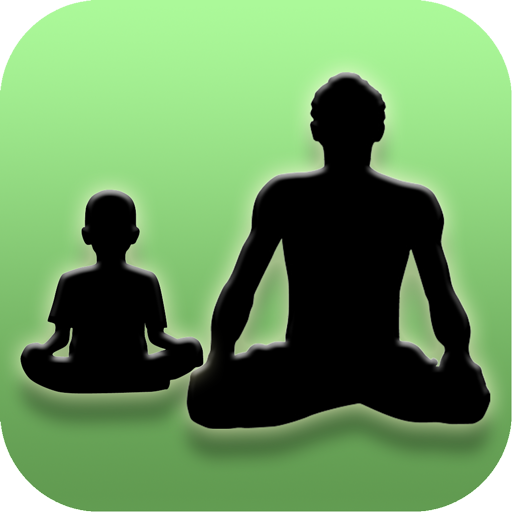 Meditation has an immediate effect.
Meditation has an immediate effect. - Improve your emotional intelligence . In a calm state, it is easier to manage emotions without getting carried away by them.
- Improves concentration . By working on mindfulness, it is strengthened, and it is easier for them to direct and consciously direct attention where the child wants.
- Activate your imagination and creativity . In the alpha state of our mind achieved during meditation, this is the best time and place for creativity. The best ideas usually come from this state, which is the state we are in right before we sleep.
- This will increase your self-esteem . They will learn to know themselves and accept themselves, gain security and self-confidence. They will grow inside.
- Su immune system will improve .
- Improves your cardiovascular and neurological capabilities.
- Their cognitive skills are developed : attention, logic, calculation .
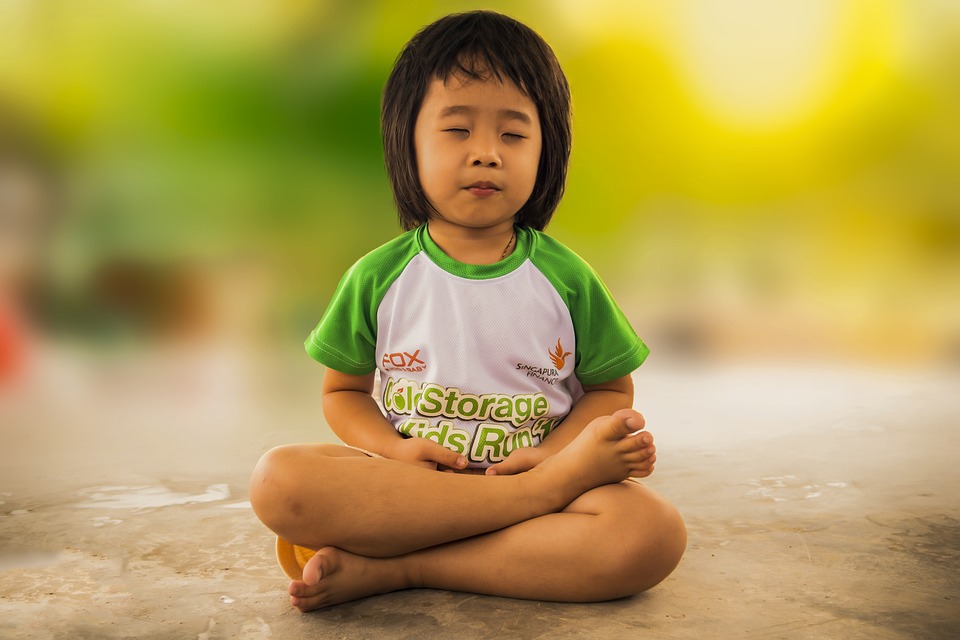 ..
.. - Develops abilities such as empathy, compassion and assertiveness , which improves their socialization.
- Better to bear disappointment with which you find.
- It will be a healthier and happier adult.
At what age can children practice meditation?
Young children are already beginning to behave towards meditation, but at 6-7 years old they can fully meditate. Children already know that they learn by playing, so meditation should be presented as a game to keep them interested.
All of these benefits are great, but if the child doesn't want to, they can't be forced . We can explain it to them and do it with them, but if they don't want anything, we can do it. We can only convince them of this by our own example and show a lot of patience.
There are specialized books on meditation for children that can take you into this fairy world, although it is best to go to classes where a specialist can give us recommendations individually according to our case.
Because remember... the benefits should not be the end of meditation, but another reason to practice it.
The content of the article complies with our principles of editorial ethics. To report a bug, click here.
You may be interested in
Meditation for children
Hello, my beloved readers!
Many times I have received letters with questions about meditation for children. Is it good for children to meditate? How does meditation affect the behavior and well-being of a child? Does meditation harm the child's psyche? What types of meditation are recommended for children. And much more.
Today I am ready to answer your questions based on research and my personal experience.
Results of research on the benefits of meditation for children
In a study conducted in five Belgian secondary schools with about 400 students (13-20 years old), Professor Philip Raes concluded that students who regularly attended meditation classes mindfulness, already after six months showed a lower level of susceptibility to depression, anxiety and stress.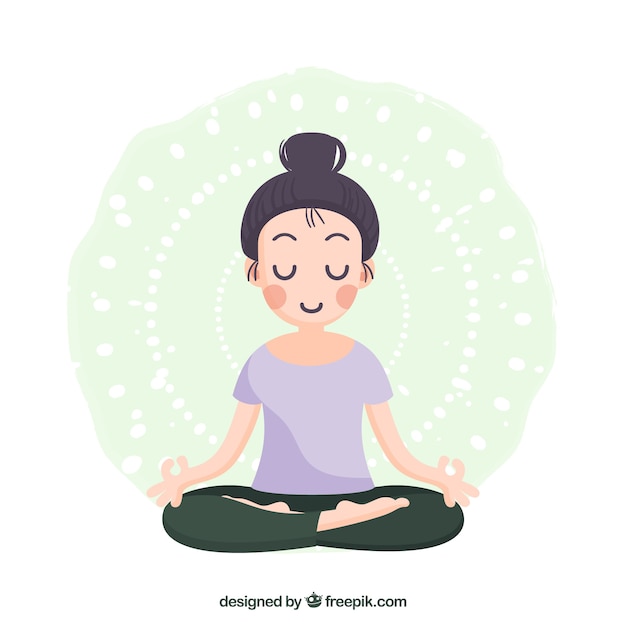
Shonet Reichl and Lawler conducted a study on the effectiveness of mindfulness meditation for schoolchildren, in which participants meditated three times a day. Overall, there was a significant improvement in positivity and a decrease in the level of aggression in children.
34 adolescents diagnosed with learning difficulties participated in a 5-week mindfulness meditation program. As a result, participants who completed the program showed a significant reduction in anxiety, improved communication skills, and academic achievement.
Benefits of meditation for children
In general, meditation for children brings the same benefits for young practitioners as for adults:
- Has a positive effect on academic performance;
- Helps children stay focused in the present moment longer;
- Improves concentration and memory;
- Promotes relaxation, finding inner peace and tranquility;
- Develops such feelings as happiness, joy, love, compassion;
- Reduces anxiety, worry, stress;
- Helps to get rid of aggression and anger or reduce their level;
- Promotes self-acceptance and self-control;
- Increases self-confidence and self-esteem.

You can read about the benefits of meditation for adults here.
Types of meditation suitable for children
Different types of meditation are suitable for children of different age groups. This is due to the peculiarities of the age development of the child. I suggest you try the following meditation techniques, taken from the book Meditation for Children by Lama Tencha. The full content of the book can be found at http://abhidharma.ru/A/Raznoe/0018.pdf.
Children aged 4 to 7
Meditation sessions for this group are very short. No more than 5-7 minutes. At this age, sensory perception and learning through direct new experience predominates in children. Analytical meditations that include logical reasoning are not suitable for them.
Conscious breathing
Take a comfortable seated posture. Let your mind turn inward. Focus on your own breathing. Breathe softly and naturally.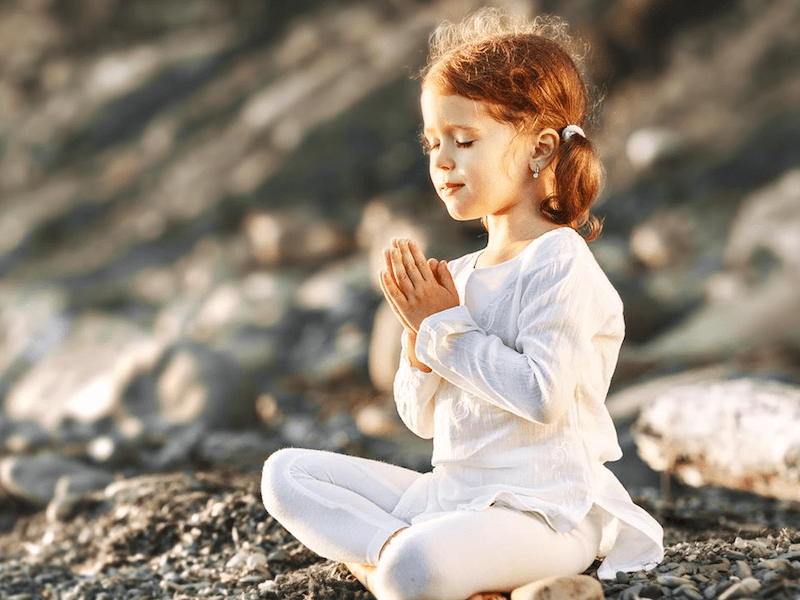
Do you know where your belly is? Put your hand on your stomach. Like this. The teacher puts his hand on his stomach, showing the children how to do it. Feel your belly rise and fall under your arm as you inhale and exhale. Breathe in and feel your belly getting bigger. Exhale and feel your belly getting smaller.
Sit still and relaxed, with your mind turned deep inward, just feeling your belly expand with each inhalation and decrease with each exhalation. We will sit like this for 2 minutes, inhaling and exhaling.
Now open your eyes and stretch a little. Gently stretch your fingers and toes. Sit still for a while, look around you and listen to the sounds of the world around you.
Awakening of the Heart
Start with quiet and even breathing. Do you feel the rhythm of your breath, feel the air entering and leaving your body?
Imagine that there are members of your family, your friends around you. All of them are here now.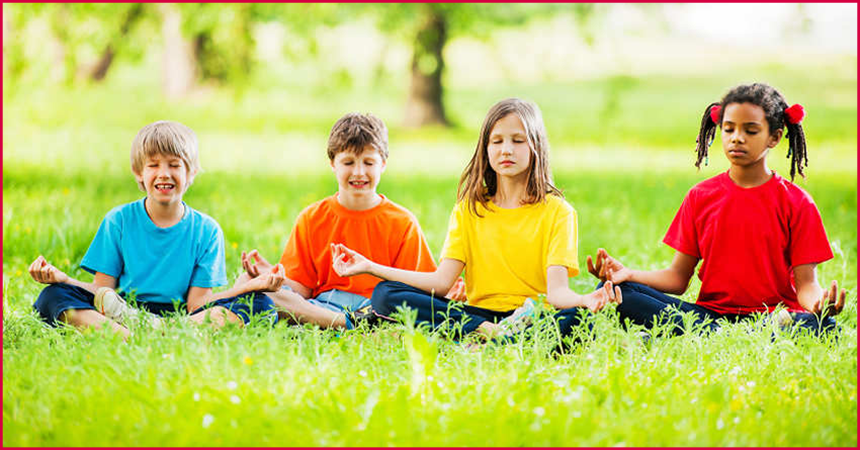 Take a breath and exhale. With each exhalation, send light and joy to everyone around you. Now imagine that you are surrounded by more and more people and animals, from the largest to the smallest. Inhale and exhale. With each exhalation, send light and joy to everyone around you. They all become happy, smile, feel a surge of strength and calmness.
Take a breath and exhale. With each exhalation, send light and joy to everyone around you. Now imagine that you are surrounded by more and more people and animals, from the largest to the smallest. Inhale and exhale. With each exhalation, send light and joy to everyone around you. They all become happy, smile, feel a surge of strength and calmness.
Feel your heart become big and warm, loving and open.
Children from 8 to 12 years old
At this age, children already use logical thinking, but their logic operates on an objective, limited level.
Purity of mind
Imagine that you are lying on the top of a mountain and looking straight into the sky, where there is not a single cloud, the sky is clear and clear. Wherever you look, there will be this clear and clear sky everywhere. Concentrate on this huge empty space.
Imagine that this vast expanse of clear sky is penetrating you and everything around you.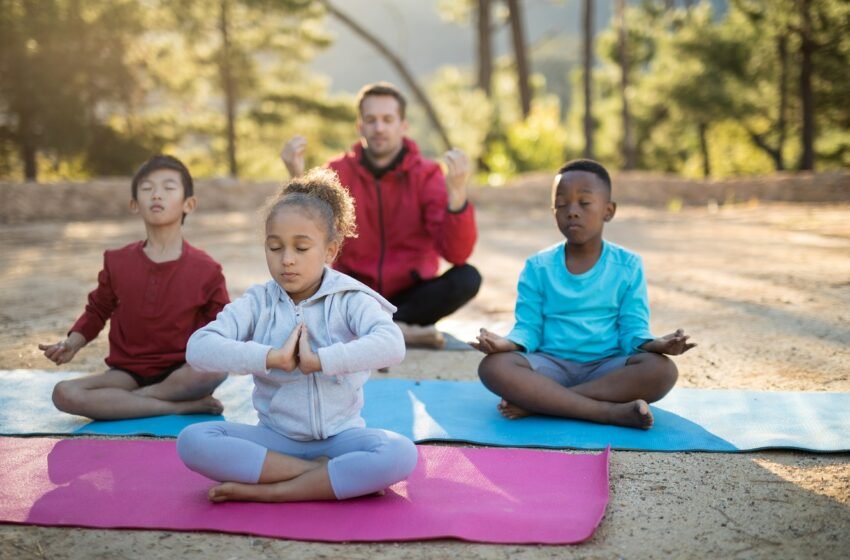 Your body and everything that surrounds you dissolves into this space of emptiness. There is nothing but a clear, empty space like the sky. Keep your mind calm and clear. Feel that your mind is clear and shining like a clear mind, open to that space. Your mind is clear and empty like the sky. Stay in this feeling for as long as you can.
Your body and everything that surrounds you dissolves into this space of emptiness. There is nothing but a clear, empty space like the sky. Keep your mind calm and clear. Feel that your mind is clear and shining like a clear mind, open to that space. Your mind is clear and empty like the sky. Stay in this feeling for as long as you can.
Gently stretch your toes and fingers. Keeping a sense of the vast expanse of the sky, feel your body as part of everything that surrounds you. You are calm and happy. There is clarity in your mind.
Mindful walking
First, let's stand still, without moving. Try to keep your hands together, like this. Join hands at the level of the navel. Close your eyes. Relax your body, breathe calmly. Inhale and exhale freely and easily, let your body truly relax and feel comfortable. With each exhalation, feel yourself becoming freer and more relaxed.
Check how you feel at the moment. If there is a sensation in you that you do not like, allow it to become soft and fluid and leave your body. As soon as this happens, feel your body immediately relax. As you continue to stand still, feel your feet touch the floor. Feel your toes, the skin of your soles, and other parts of your feet that are in contact with the floor.
As soon as this happens, feel your body immediately relax. As you continue to stand still, feel your feet touch the floor. Feel your toes, the skin of your soles, and other parts of your feet that are in contact with the floor.
We begin to move slowly together, taking careful soft steps. Raise one leg first and, moving forward, slowly and carefully lower it. Then lift the other leg, and, moving forward, also slowly and carefully lower it. Watch how the sensations in your feet change with each movement. Notice the change in sensations in different parts of the foot as they touch the floor.
If you start thinking about anything else, just notice the thoughts come up and still go back to your feeling in your feet. Just watch your thoughts from the outside and let them go. So we will walk slowly for several minutes, paying attention to the sensations in the feet.
Children aged 13 to 15
Children of this age are able to successfully handle more complex language and concepts, and can concentrate and sit still for longer periods of time.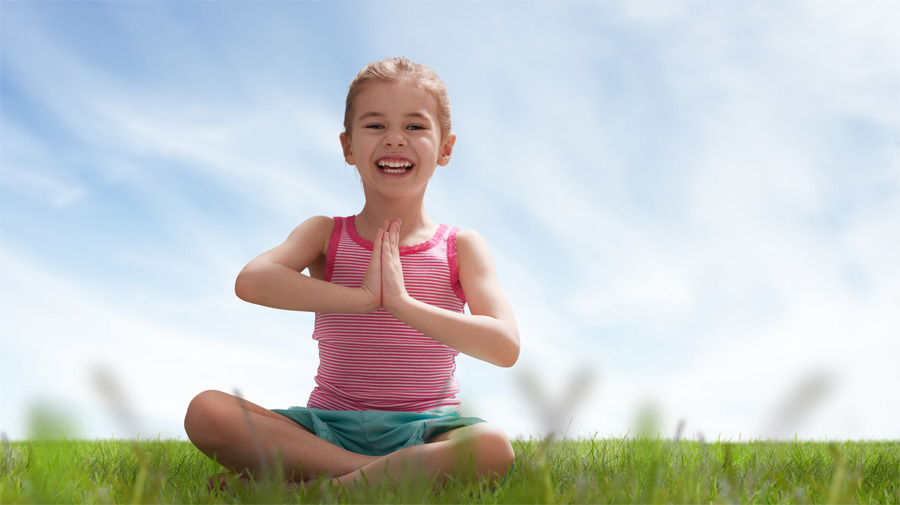
Light Meditation
Sit comfortably and breathe naturally. Then, when your mind becomes calm and clear, imagine that you are on the banks of a beautiful river, lake or ocean, over which the bright sun shines. Sunlight, reflected in the waves, sparkles and scatters with many dazzling rays.
Think about the fact that this light is all the best, filled with power, it is there that the answers to all the questions that worry you are contained. Light surrounds you from all sides and covers, overflowing your body with great joy, penetrating inside through the tiniest parts of your body. Your body turns into pure white light. Focus on it.
Think that all your problems and difficulties are completely dissolved in this radiant white light, until the last of them disappear, leaving only a white radiance. Your body becomes a body of white light. All your thoughts dissolve into the light of your body. Feel how things really change, that all your suffering disappears completely.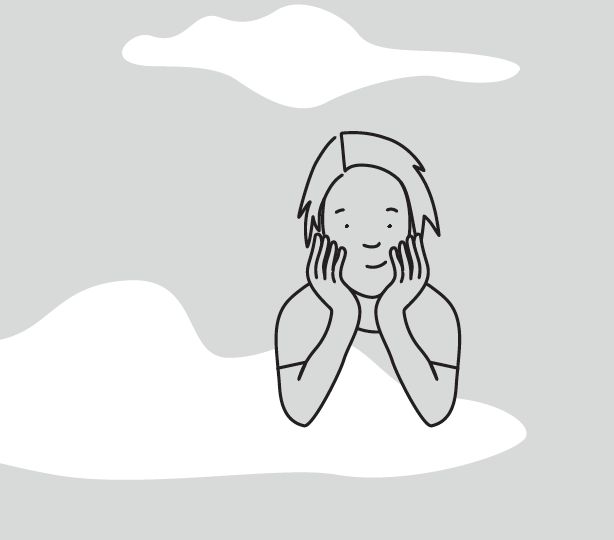 Feel yourself getting better.
Feel yourself getting better.
Keep this feeling of strength for as long as you can.
The division into age groups is rather arbitrary, if you think that your child is ready for the meditation you have chosen, try it with him. If your child is happy to perform it, then you can again refer to this technique in the future.
The most important thing, in my opinion, is to make your child want to meditate, so that meditation is not perceived by him as a tedious duty, but is done with joy and pleasure.
My experience with meditation for children
I teach yoga and meditation for children from 4 to 12 years old, the main age is 6-9 years old. I usually do meditation with the kids at the end of the class. Rather, it is not even meditation as such, but some meditative relaxation. It contributes to the physical and mental relaxation of children, a positive attitude, the development of such feelings as joy and peace.
The children lie down in shavasana, I ask them to close their eyes and focus on their breathing.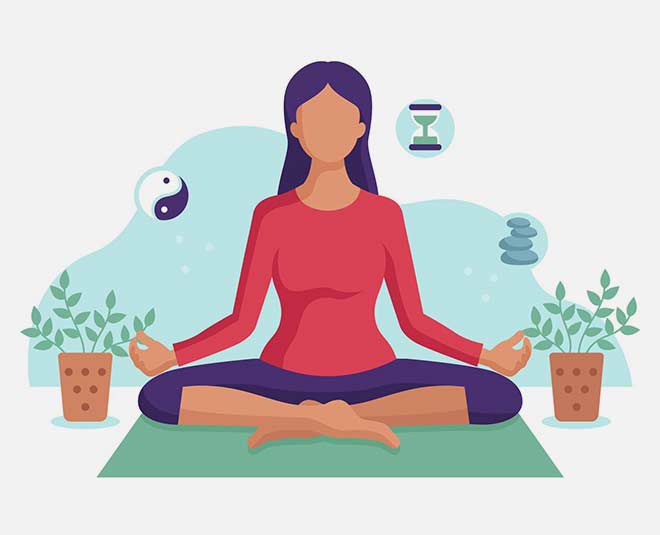 At the same time, I do not stop the monologue: "take a deep breath, and then exhale slowly, breathe through your nose, evenly and calmly." Then I ask them to relax the body parts by calling them and giving them some time to relax.
At the same time, I do not stop the monologue: "take a deep breath, and then exhale slowly, breathe through your nose, evenly and calmly." Then I ask them to relax the body parts by calling them and giving them some time to relax.
When the children have calmed down, relaxed, breathe evenly and calmly, I invite them to imagine that they are at the sea, in the forest, in a sunny meadow, in a flower field, in their favorite place on earth or soaring in the clouds. Each time it is a different place, but always very pleasant, positive, safe.
Then I ask what they see there, but I encourage them not to answer aloud, but only imagine and observe. And I help them by listing items that hypothetically can be in this place. For example, on the sea, children can see sand, palm trees, waves, a ship, a dolphin, a turtle, etc. Then I ask how they feel and list them again. For example, as warm sand touches their feet, the gentle sun warms the skin, a light breeze blows and the hair flutters.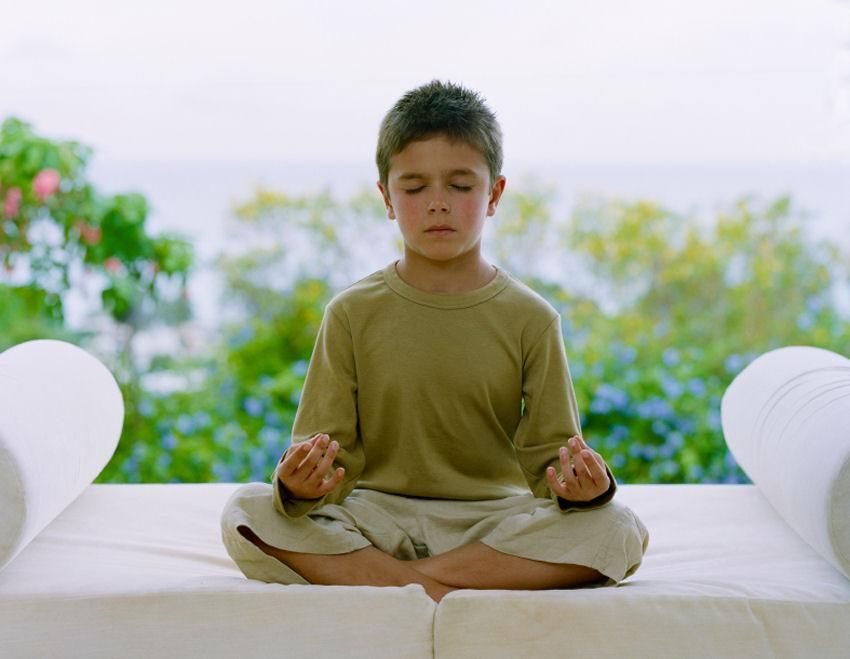 I try to use different senses: sight, smell, touch, hearing, taste.
I try to use different senses: sight, smell, touch, hearing, taste.
And then I ask them to feel how love, joy and happiness fill them, how the sun energizes them, they are relaxed and calm. Or, for example, that they can share their secret with an animal they meet in a chosen place. Or that they can return to this place whenever they want, if they feel sad. Every time I try to come up with something new, but always positive and kind.
In my opinion, meditation for children should first of all teach them to relax, concentrate on their feelings and sensations, and create a state of calm and joy.
We also sing the mantra OM sometimes. To do this, we sit in a circle in the lotus position, close our eyes, sometimes we hold hands. And then I suggest taking a deep breath and chanting OM as you exhale. This is good for developing the lungs and also calms children a little if they are very excited and uncontrollable after some kind of active play.
I also classify the activity of coloring the mandala as meditation.